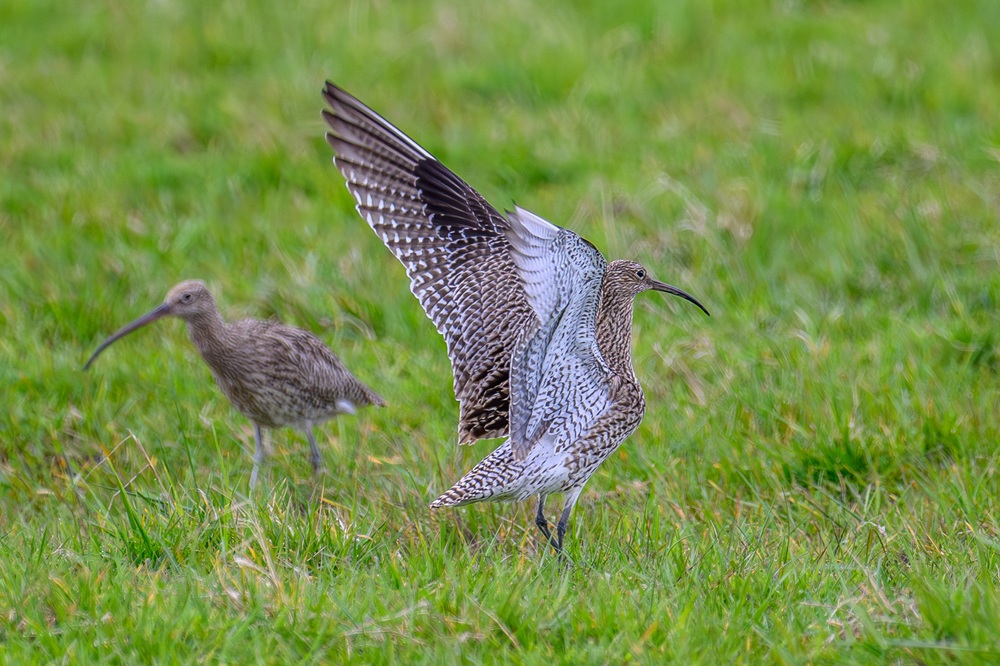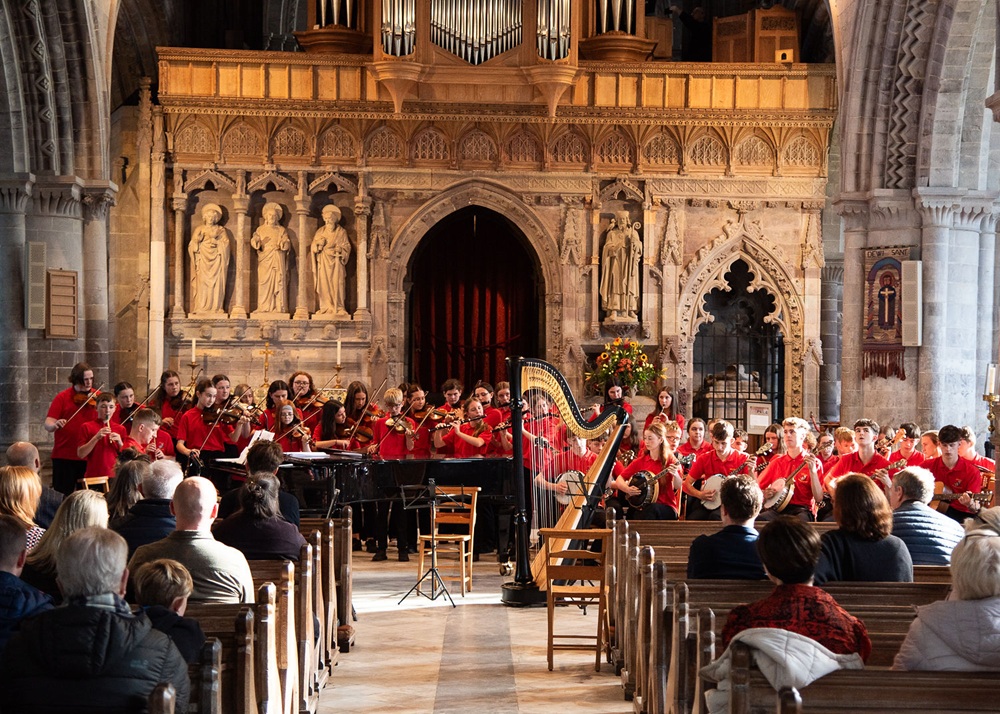Culture Highlights 2024: Curlews and Between the Sea and the Stars

Julie Brominicks
Elusive Curlews
Hares. Kingfishers. Little Owls. Fox. It’s May and my wildlife-photographer friend Jason Hornblow is in my greenhouse sifting through his phenomenal shots of pine martens, otters, wild boar… ‘Wait.’ ‘What?’ ‘Curlews.’ ‘But these are just snaps!’ Not to me dear Jason.
Save for one glimpsed in Criccieth, curlews have eluded me this year and now, in the same week that my friend Fergus has been watching dozens on a brownfield site, and I learn that composer David Pepper and Nation Cymru’s lovely Jon Gower have collaborated to create ‘Cri’r Gylfinir’/ ‘The Curlews’ Cry’ (which I’m also set to miss), here is Jason. Check out his photos here
‘Tir’ by Carwyn Graves
Curlews, with their cryptic plumage and elegiac piping are the endangered species everyone cares about. Ecologists strive to save their habitats and farmers pine their non-returns. Naturally, they feature in ‘Tir’ by Carwyn Graves.
This cracking book demonstrates how Welsh farming has shaped the landscape which was until recently, much richer in wildlife. What happened? An increase in sheep and intensification met a decrease in cattle and arable, resulting in habitat-loss. Carwyn sets out a sensible vision for modern mixed farming. This way to a flourishing Welsh rural economy, language and wildlife.
Hot Poets
July, and I chance upon the same message at WOMAD. We missed Cerys Hafana while working in the Real Ale bar, but caught the Hot Poets; a project pairing poets with regenerative farmers.
Under the trees at the Hip Yak Poetry Shack we listened, eyes closed, to city poets spinning rhymes about hedges. And in the midst of this most international event there was suddenly Cymraeg and a voice I knew – Ifor ap Glyn! A proud moment.
Ifor recited the wonderful ‘Trwsio’r Tir / Landmending’ in Cymraeg and English. Here’s an extract.
And in this land, where rustic homes
were once ‘magicked’ overnight,
not everything today
leaves through the farm-gate.
We find carbon capture here;
the stopping of rains from swelling to flood;
a refuge for soil-life and curlew alike.
(Wearing his Cymru bucket hat, Ifor popped in the bar later when the pumps were broken, and I poured him a pint full of foam.)
Ynys-hir
November. Dave Anning is leading a wildfowl and waders walk at RSPB Ynys-hir. High tide, the waterbirds have gathered on what’s left of the land.
Among lapwings and wigeon, greenshank and pintails and barnacle geese, are some 300 roosting curlews. Rest well curlews, rest ye well.

Myles Pepper
The vision of the Simffoni Mara project, which brings together creative and performing artists from both sides of the Irish Sea, was triumphantly on display at a concert on 26 October 2024 which featured numerous new compositions in a variety of genres.
Also, the return of young musicians from the Danescastle Music Group in Wexford playing traditional Irish music thrilled the audience.
Composer Dan Jones’s “Between the Sea and the Stars” perfectly captured the spiritual essence of the project, combining the forces of a string quartet, the St. Davids’ cathedral organ and piano.
It reflected Jones’ own discovery of north Pembrokeshire and the extraordinary space its landscape represents historically, as a resonant canvas for ancient creativity, and how it remains an inspiration to contemporary artists.
Liminal space
In Grahame Davies’s “Simffoni Mara 1’,” use is made of the important Celtic concept of the liminal space, the betwixt-and-between magical otherworld between two states of being: “two waves and two shores,” this set to music by Paul Mealor, commissioned for and performed by Ysgol Gerdd Ceredigion.
The late Eric Sweeney’s Fishguard Suite comprises of Pen Strwmbl; Bernach Nanhyfer; Pentre Ifan; Carn Ingli and Carn Ffoi. Eric warmly accepted the invitation to explore places in north Pembrokeshire that shaped my life and render them into musical forms.
The evening concluded with a new work for Ysgol Gerdd Ceredigion, under the direction of Islwyn Evans who is so greatly admired as an inspirer of children. “Caneuon y Tonnau” by Gareth Glyn and Eleri Cwyfan, who were themselves overjoyed by the performance and the enthusiastic reception for the songs from the children, conductor and audience said, ‘Ysgol Gerdd Ceredigion has some very young singers in its ranks, and the brief asked for a group of songs on themes that would appeal to children, based on the sea and the shore.
‘We came up with Caneuon y Tonnau (Songs of the Waves). The first song is a child’s dream of owning a sailing boat to explore the world before sailing back home.
In the second song, the child finds a shell on the beach and is enchanted to discover that it holds the song of sea. The third is a child’s view of a storm at sea, expressing in turn excitement and awe, and in the end a realisation that the beam from a lighthouse shows a safe path home for ships at sea.’
Support our Nation today
For the price of a cup of coffee a month you can help us create an independent, not-for-profit, national news service for the people of Wales, by the people of Wales.




